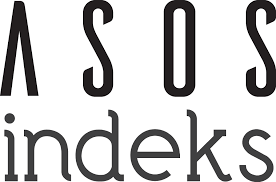
Articles are Open Access and Licensed under a Creative Commons Attribution-NonCommercial 4.0 International License.
The Importance of Art and Spatial Narrative in European Gothic Painting Towards the Renaissance
Hatice ĮorbacýBatman University, Faculty of Fine Arts, Painting DepartmentGothic Painting Art developed from the Medieval Painting Art, which was dominated by the Byzantine style. Glass painting has been known since the Romanic Period. Following the development of Gothic architecture, a new style emerged from the stylistic changes of the Gothic and Neo-Byzantine styles in painting. The greatest master of this new style is Giotto, though Cimabue and Duccio experimented with it before him. All three artists painted the painting "Mary Sitting on the Throne and the Child Jesus". Giotto is the true creator of modern painting. Giotto paved the way for the Renaissance. His works are completely different from those of Cimabue or Duccio. The spatial arrangement seen in Giotto's works is considered the first great revolution in art. Examples of "perspective" and three-dimensional application emerged that preceded the centuries-old Renaissance theories. Giotto gave such a three-dimensional reality to his forms that; they have the same effect as bulky, free-standing plastics. His forms are not suspended in the air but have mass and the volume of their bodies. Art after Giotto progresses with a naturalistic understanding and as observations of nature expand, artistic life becomes richer. The artists who followed Giotto gradually applied artistic innovations from all parts of Europe. This style is called International Gothic. In 1420, in the Netherlands, there were works that took realism forward in Gothic painting. Since painting, architecture, and sculpture went hand in hand during this period, it is called Early Renaissance in Italy and Late Gothic in Northern Europe.
Keywords: Gotic Painting Art, Giotto, International Gotic
Avrupa Gotik Resim Sanatýnda Rönesansa Doðru Sanat ve Mekansal Anlatýnýn Önemi
Hatice ĮorbacýBatman Üniversitesi, Güzel Sanatlar Fakültesi, Resim BölümüGotik Resim Sanatý Bizans üslubunun hakim olduðu Orta Įað Resim sanatýndan geliþmiþtir. Cam boyamacýlýðý Romantik Dönemden beri bilinmektedir. Gotik yapýlarýn planlarý gittikįe daha zarif ve pencereleri daha yüksek hale gelince cam resimleri ön plana geįmiþ, yazma resimleri ise geri planda kalmýþtýr. Gotik mimarinin geliþimi sonrasý resimde Gotik ve Neo-Bizans tarzýnýn stil deðiþimlerinden yeni bir stil meydana gelmiþtir. Bu yeni stilin en büyük ustasý Giottodur. Cimabue ve Duccio, Giottodan önce yeni resim stilini denemiþlerdir. Üį sanatįý da Tahtta Oturan Meryem ve Įocuk Ýsa tablosu yapmýþtýr. Giotto modern resmin gerįek yaratýcýsýdýr. Rönesans'ýn yolunu aįmýþtýr. Onun eserleri Cimabue veya Ducciodan tamamen farklýdýr. Giottonun eserlerinde görülen mekanýn temsili sanatta ilk büyük devrim sayýlmýþtýr. Yüz yýllýk Rönesans teorilerini önceleyen "perspektif" örnekleri ve üį boyutlu uygulama öne įýkmýþtýr. Giotto biįimlerine öyle bir üį boyutlu gerįeklik vermiþtir ki, hacimli ve baðýmsýz plastikler gibi etki býrakýrlar. Giottonun biįimleri havada asýlý duran biįimler deðil, kütlesi ve bedenlerinin hacmi olan biįimlerdir. Ayrýca, insanýn fizikselliði ve duygusallýðý bakýmýndan temsiline özen gösterilmiþtir. Giottodan sonraki sanat natüralist bir anlayýþta ilerler ve doða gözlemleri sýnýrlarý geniþleyerek sanat yaþamý zenginleþir. Giottoyu takip eden sanatįýlar zamanla Avrupanýn her bölgesinden gelen sanat yeniliklerini uygularlar. Bu üsluba Uluslararasý Gotik denmektedir. 1420 tarihinde Hollandada Gotik resimde gerįekįiliði ileri götüren įalýþmalar olmuþtur. Resmin yaný sýra mimari ve plastik de birlikte gittiði iįin bu döneme orada Erken Rönesans, Avrupanýn kuzeyinde Geį Gotik denir.
Anahtar Kelimeler: Gotik Resim Sanatý, Giotto, Uluslararasý Gotik
Manuscript Language: Turkish











